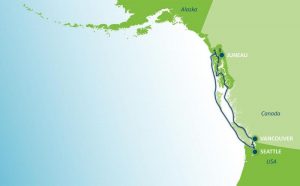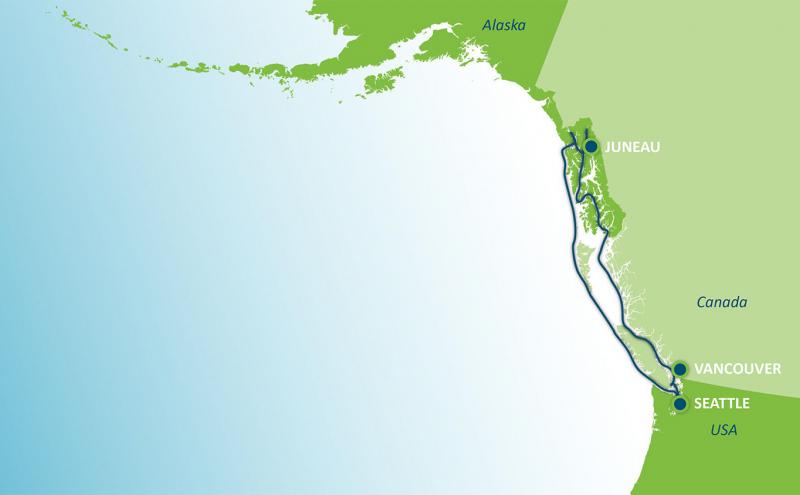
The feasibility of a cruise-driven ‘green corridor’ – a water route aimed at zero greenhouse gas emissions – is being explored by leaders at the Port of Seattle, the city and borough of Juneau, Alaska, Vancouver Fraser Port Authority and the cruise industry, various parties said Tuesday, May 17.
Port and civic officials and cruise lines such as Carnival Corp., Norwegian Cruise Line Holdings, Royal Caribbean Group and Cruise Lines International Association said they are committed to exploring a potential green corridor that could speed up the launch of GHG emissions-free vessels operating between Alaska, Washington and British Columbia.
“Cruise industry, cross-sector community and government collaborations are critical to advancing our collective path to net zero,” Royal Caribbean Group President and CEO Jason Liberty said. “This aligns with our own … commitment to pursue net-zero emissions across our operations so that communities in Alaska and the Pacific Northwest benefit as we continue to deliver great vacations responsibly and drive progress toward a more sustainable future.”
Almost 300 vessels depart Seattle for Alaska during a six-month cruise season, while Alaska hosts over 600 cruise sailings annually, officials said.
“These first movers are coming together around the need to address the most pressing issue of our time – climate change,” Port of Seattle Commissioner Fred Felleman said. “By exploring the development of a green corridor, we’re bringing resources and technological advancements to this region where commercially viable zero greenhouse gas emissions ships may sail that much sooner.”
“We’re not naïve about the challenges ahead,” he continued. “But we recognize the urgency to act as we transition to an inclusive blue economy that works for the climate, commerce, and communities alike.”

